Does Flexing Build Muscle? Benefits & What To Expect



Table of Contents
- Does Flexing Build Muscle?
- Benefits of Flexing Your Muscles
- 5 Flexing (Isometric) Exercises
- Is Flexing Enough To Build Muscle Mass?
- Wrapping Up
When you flex your biceps, you can feel your muscles tensing and a slight burning sensation. So, does it mean that flexing makes you build muscle?
While flexing your muscles may not give you the results you were hoping for, it is still a good way to improve your fitness levels.
This article will explain what flexing is and how you can use it to your advantage to increase your muscle strength and volume.
Does Flexing Build Muscle?
Before answering the question, “Can flexing build muscle,” it is important to define what flexing is.
Muscle flexion occurs during the concentric phase of a movement, which is when a muscle is dynamically shortened to achieve a contraction.
In other words, it occurs at the peak of when you lift a weight.
In gym jargon, the term “flexing” describes contracting a muscle, followed by an isometric hold. This means the contraction is held for a few seconds with no movement occurring at the muscle or joint level.
This mechanical motion can lead to increased muscle mass and strength. Especially if performed using a load, though muscle shortening is less effective than muscle lengthening in increasing muscle size. [1]
Although limited, even unloaded flexion can lead to increased muscle gain and strength if the hold is maintained for longer. For instance, planks are a good example of how unloaded isometric contractions can be used to build core muscles. [2]
So, if anyone asks you, “Does flexing your abs build and strengthen your core muscles?”, you can confidently say it does, especially if weights are involved.
Benefits of Flexing Your Muscles
Flexing your muscles offers a series of benefits to both your general health and your fitness performance. You can find them all outlined below.
Improved Posture
This only applies to the muscles that maintain our posture, such as those in the trunk, neck, or back.
Studies have shown that flexing these muscles can improve proprioception, which means individuals can better perceive if their posture is compromised and readjust it whenever needed. [3]
Reduced Blood Pressure
People suffering from hypertension should include isometric exercises in their workouts. These exercises were found to be potentially more effective than other training styles in reducing blood pressure.
Researchers suggest performing as little as four sets lasting two minutes. Do this three to five times a week. This makes it a very time-efficient way to tackle hypertension and prevent heart problems, although further research is needed to confirm these findings. [4]
Supports Recovery From Injuries
Isometric contractions can support recovery from injuries or musculoskeletal conditions, such as osteoarthritis. This is because they don’t put the same amount of intra-articular inflammation and pressure on bones and soft tissues as heavy load strength training. [5]
Better Muscle-mind Connection
Flexing is a low-intensity muscle contraction that can help you improve your mind-to-muscle connection when lifting weights, as it increases muscular reflex excitability. [6]
Increased Muscle Endurance
Holding a contraction can help your muscles sustain fatigue for longer, which ultimately results in increased muscular endurance. [7]
Greater Muscle Growth And Strength
Studies show that isometric exercises can support your muscles in getting both bigger and stronger. They can therefore be used to complement resistance training programs. [8] [9]
Improved Performance
One research study found that isometric strength training can support dynamic movements, such as running, cycling, or jumping. This suggests isometric exercises should be included in conditioning programs to support performance. [9]
Gives You A Pump
Flexing also increases blood flow to the contracted muscles, giving you a temporary pump and the illusion that your muscles have gotten bigger.
Having an increased blood flow to the muscles is not only good for your aesthetics. It also means your muscles are receiving more nutrients, which are essential for repair and growth. [10]
5 Flexing (Isometric) Exercises
Isometric exercising can be applied to both upper and lower body muscles. Here are a few examples of flexing exercises that involve isometric holds.
Glute Bridge Hold
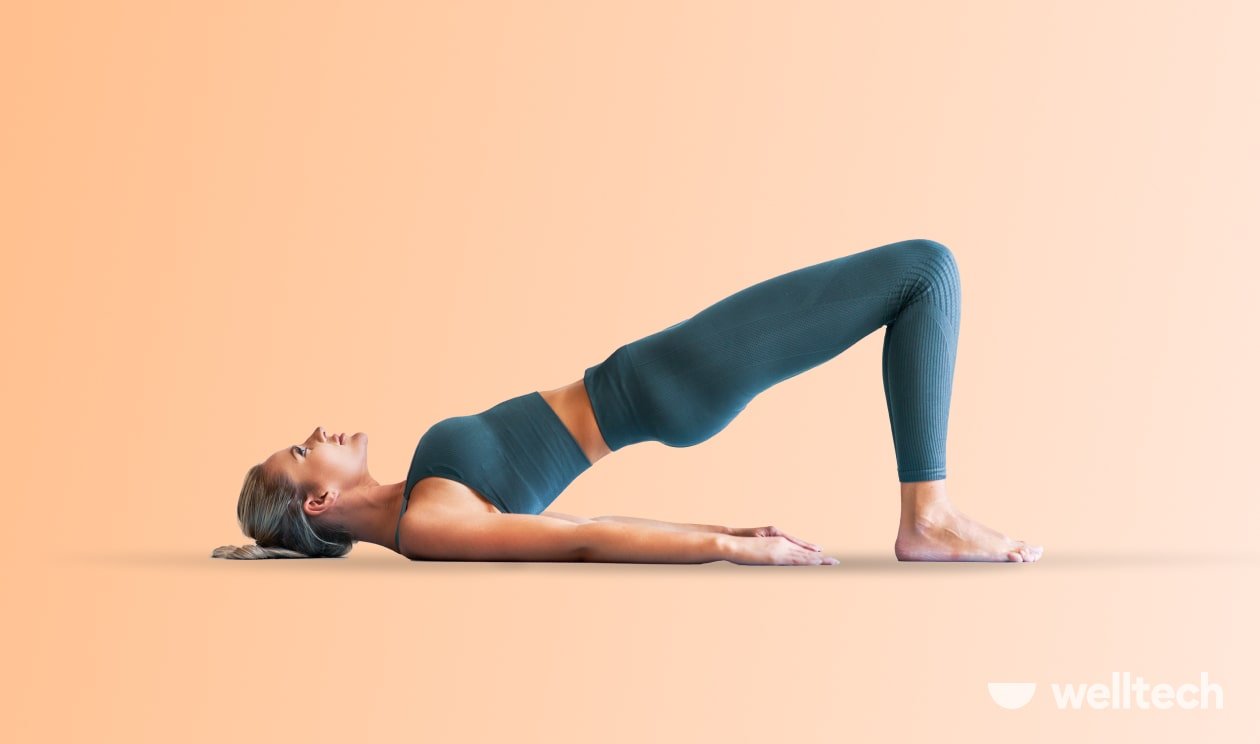
This exercise flexes the glutes, but it can be used to target the whole lower body as you can also feel the tension in the quadriceps and the hamstrings.
For the best results, hold the position for a minimum of 30 seconds. To progress, you can increase the hold time or add a load.
Plank
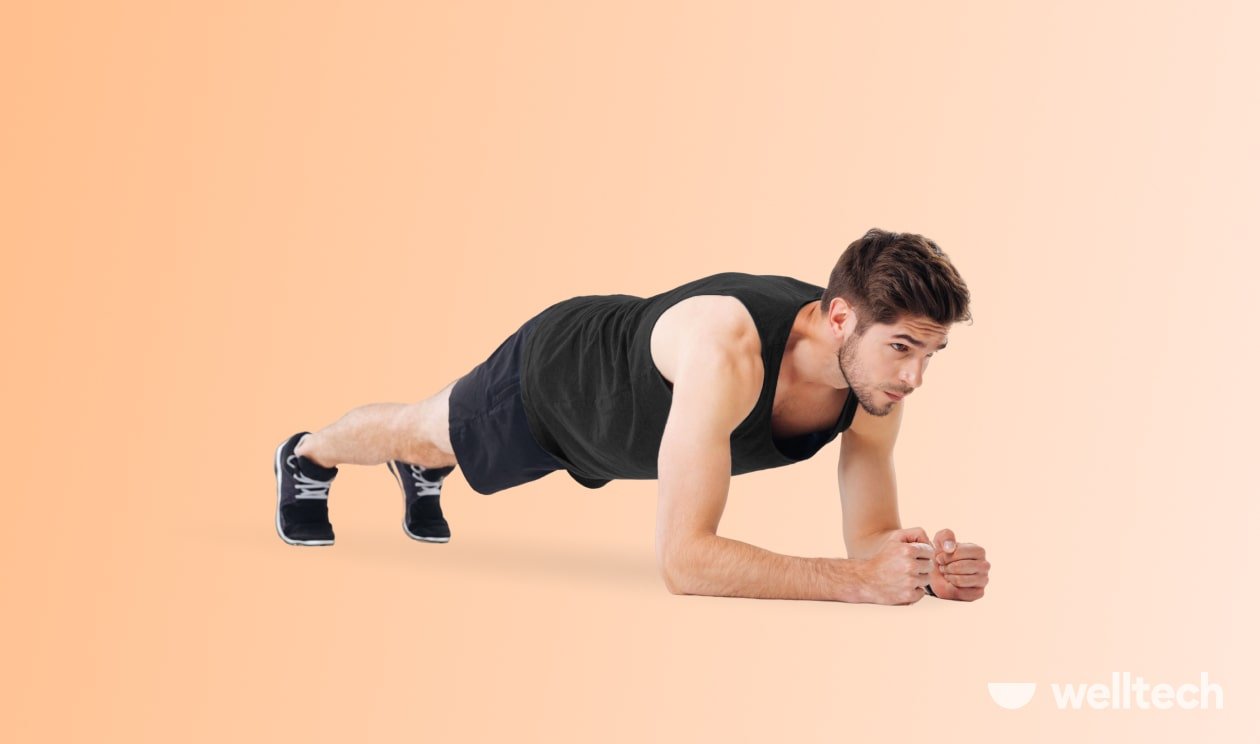
Planks target the abdominal muscles and, to some extent, the glutes. If performing this exercise with the arms extended, you can even apply some flexion to your triceps.
Aim to maintain the hold for a minimum of 20 seconds, and increase the hold time as you get stronger. You could also start by performing a modified plank, which is with your knees dropped on the ground, and progress to an extended one as your strength increases.
Isometric Pike Hold
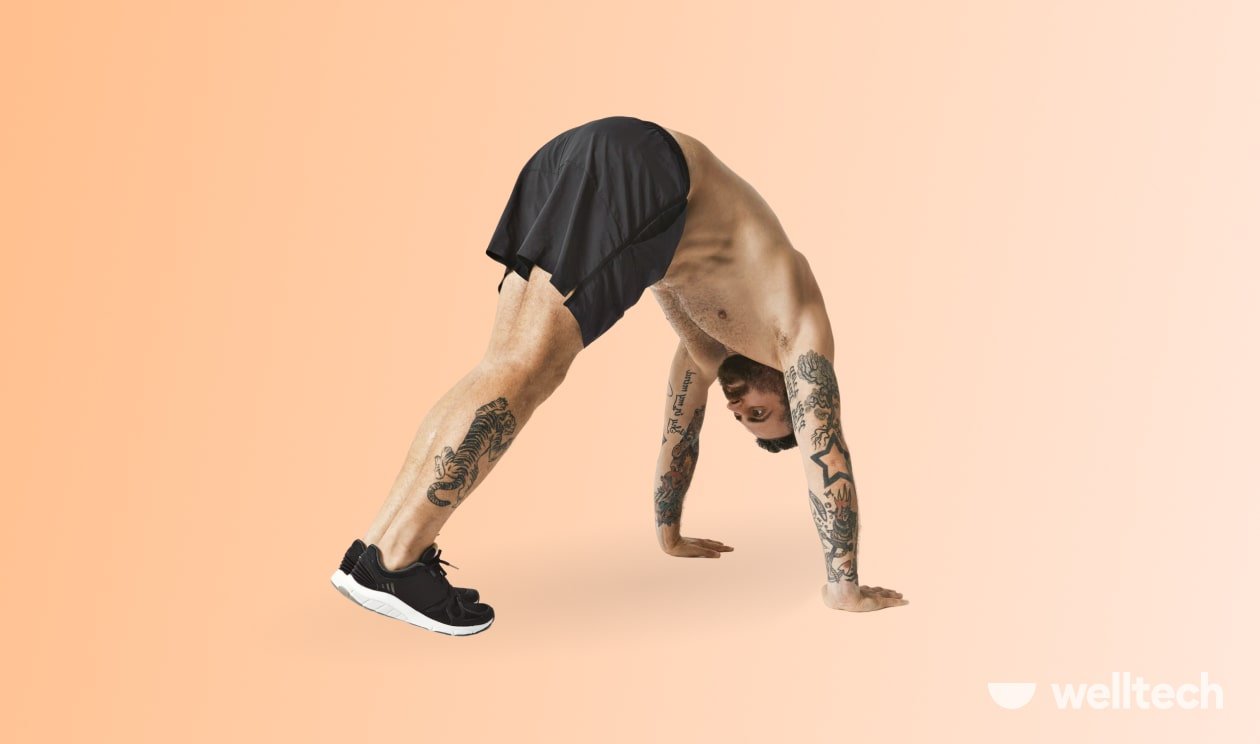
Isometric pike holds flex the core, the triceps, and to some extent, the shoulders.
Maintain an isometric pike hold for a minimum of 15 seconds, and increase the hold time as you get stronger.
Triceps Hold
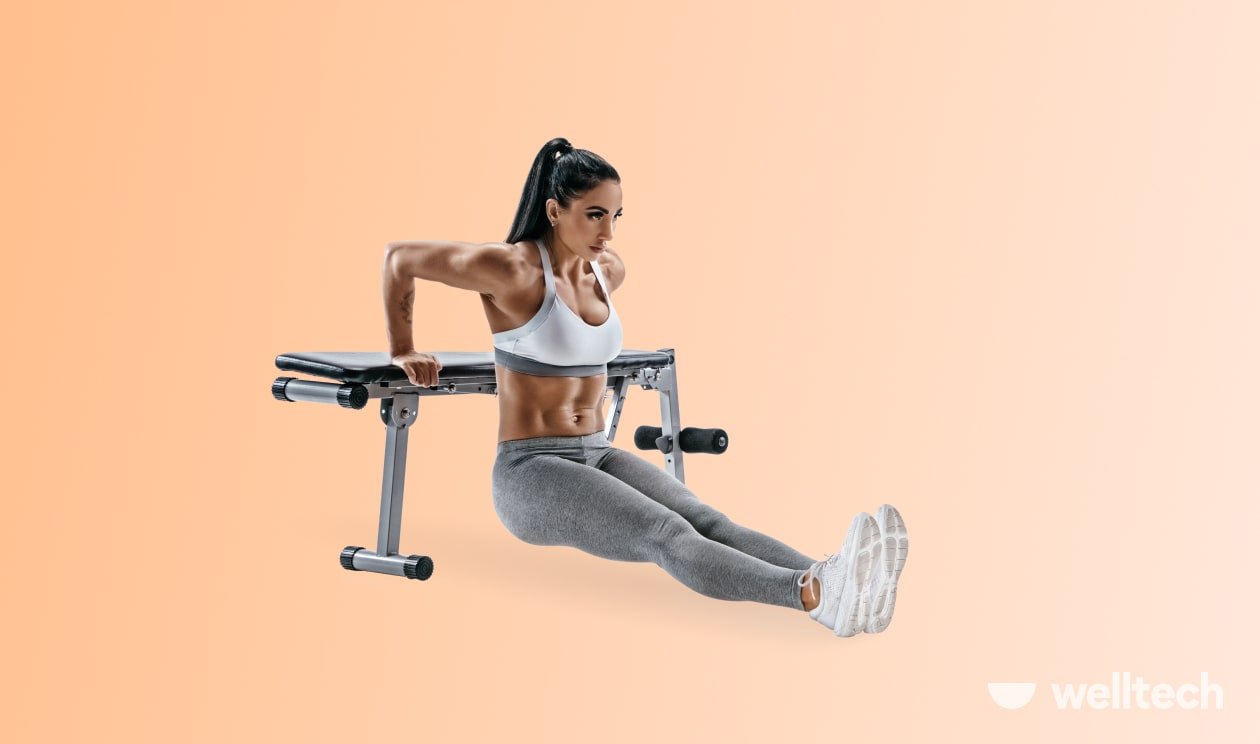
Triceps holds can be performed during any triceps exercise and, as the name suggests, it contracts the triceps muscles.
The triceps hold can be maintained until failure at the end of a triceps workout or for a minimum of 15 seconds if performed during your warm-up or as part of your training session. As you get stronger, you can increase the hold time or the load lifted.
Biceps Hold
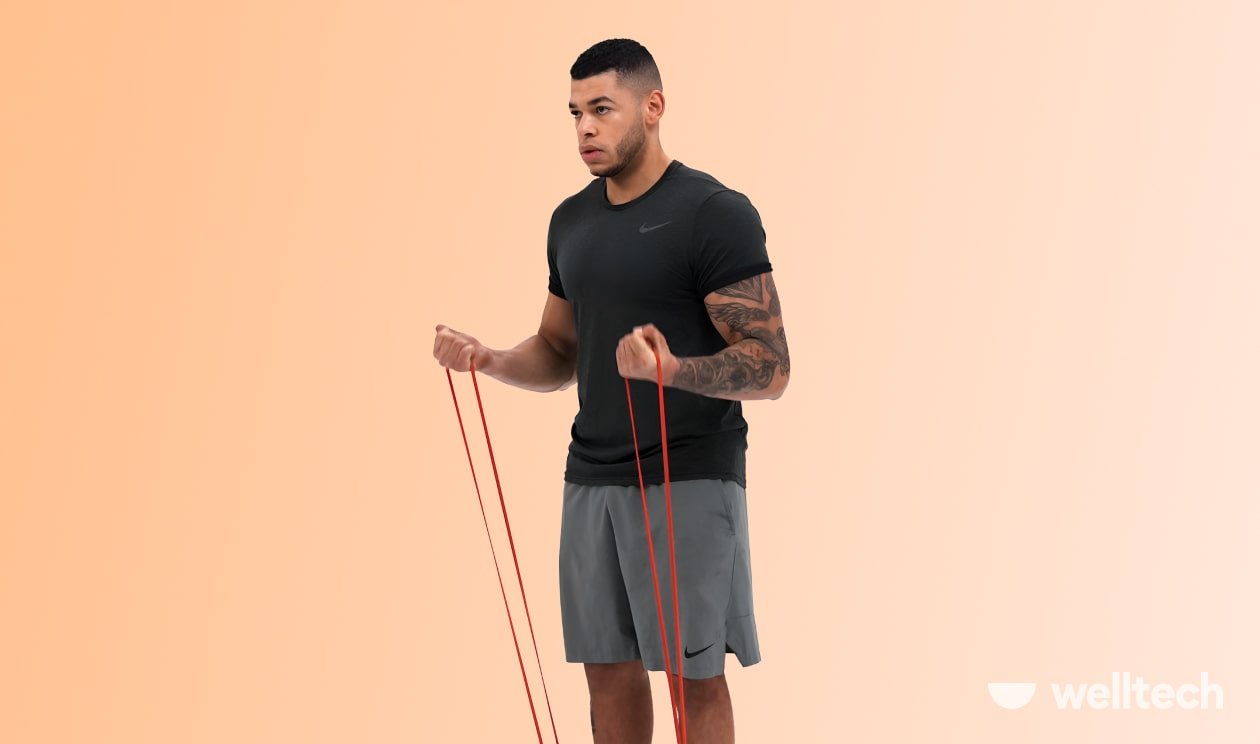
The biceps hold targets the biceps and can be performed during any exercise that targets or works this muscle by simply holding the contraction.
Maintain biceps holds until failure if performed at the end of a biceps training session or for at least 15 seconds if performed to warm up or as part of your workout. You can then progress by increasing the hold time or the weight lifted.
Is Flexing Enough To Build Muscle Mass?
Flexing can improve muscle strength and aid hypertrophy, but does flexing your muscles alone make them grow bigger?
Unfortunately, it doesn’t. You can contract your biceps as many times a day as you want. However, your ability to build muscle in your arms by simply flexing them is rather limited. Holding the contraction is good for the muscles, but it is important to remember that flexing in the mirror is not a workout.
With that said, performing muscle flexion along with hypertrophic resistance training exercises and following progressive overload can help you increase the size of your muscles. [11]
To maximize the results, low-impact isometric holds should ideally be performed inter-sets or during your warm-up.
Wrapping Up
Gymgoers often flex to show off their hard-earned muscles, but they probably don’t know that what they are doing is also positively contributing to their fitness. Here you can find the key points about flexing and how it can support muscle growth and strength:
- In general terms, muscle flexion indicates the action of contracting or shortening a muscle during the concentric phase of a movement.
- In gym jargon, “flexing” is contracting a muscle and then holding the contraction for a few seconds with or without a load.
- The action of contracting a muscle can lead to increased muscle mass and strength, especially if performed using a load.
- Flexing has a series of other benefits, such as improved posture, reduced blood pressure, injury recovery support, improved muscle-mind connection, increased muscle endurance, improved fitness performance, and increased blood flow to the muscles.
- Flexing is not enough to build muscle mass; as for that, you require progressive overload. However, it can be a great way to complement your resistance training workouts, especially if performed during your warm-ups or in between sets.



